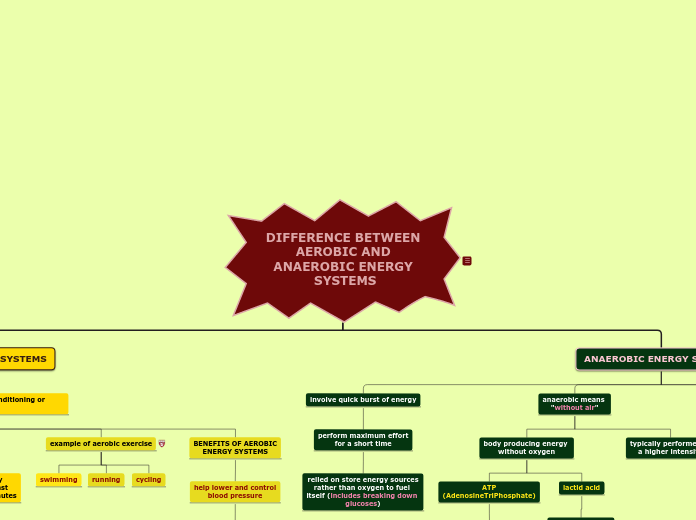realizată de Nurfarhana Mahat 5 ani în urmă
575
DIFFERENCE BETWEEN AEROBIC AND ANAEROBIC ENERGY SYSTEMS

realizată de Nurfarhana Mahat 5 ani în urmă
575

Mai multe ca acesta
Identify how rainforest animals have adapted to live in this unique environment.
Rainforests in Central America, Amazon, Asia, Africa, and Australia cover about 6% of our earth's surface, but they are the home ground for more than half of the species of animals in the world.
builds muscle
increase stamina
lactid acid
last from 10-20 seconds
ATP (AdenosineTriPhosphate)
last from 0-10 seconds
relied on store energy sources rather than oxygen to fuel itself (includes breaking down glucoses)
help lower and control blood pressure
increase stamina & reduce fatigue during exercise
strengthen your heart
cycling
running
swimming
involves in any exercise that last longer than 2 minutes
producing energy using oxygen
heart rate increase
maximizing the amount of oxygen in the blood
increasing blood flow to the muscle and back to the lungs
breathing